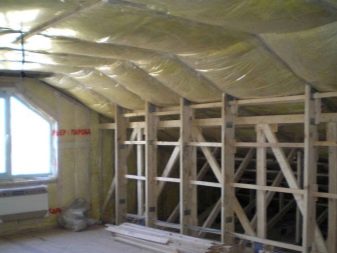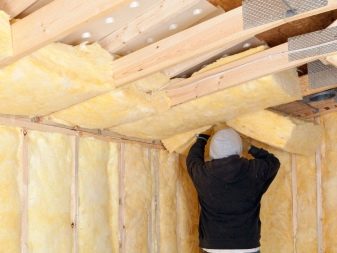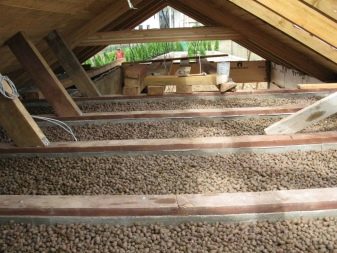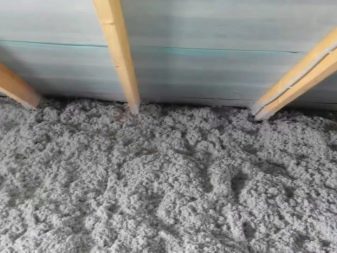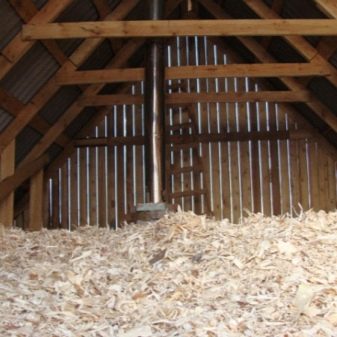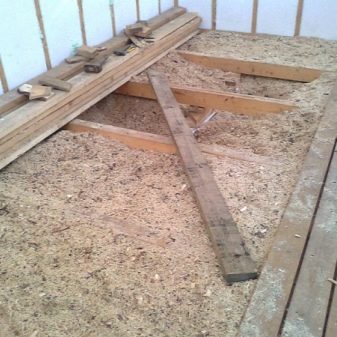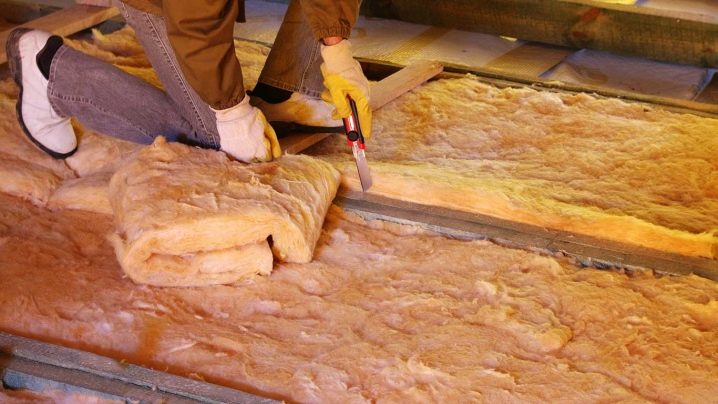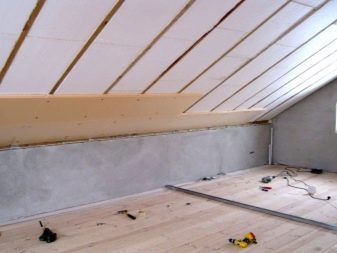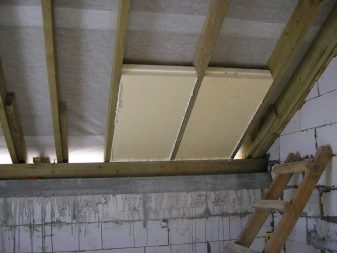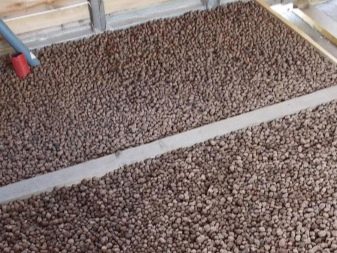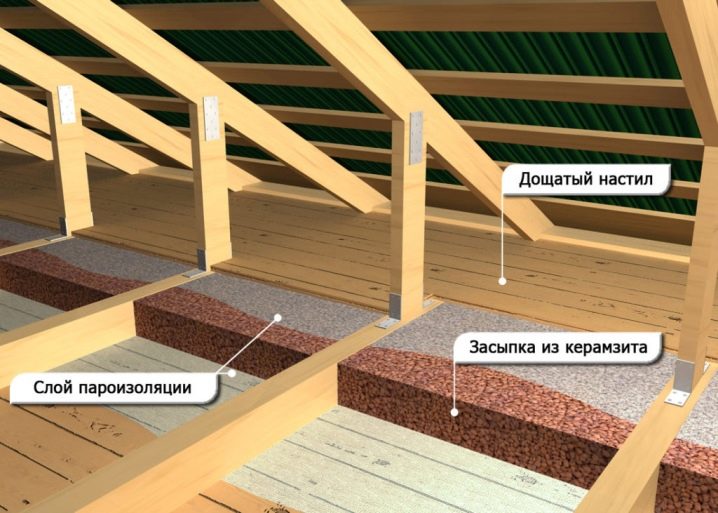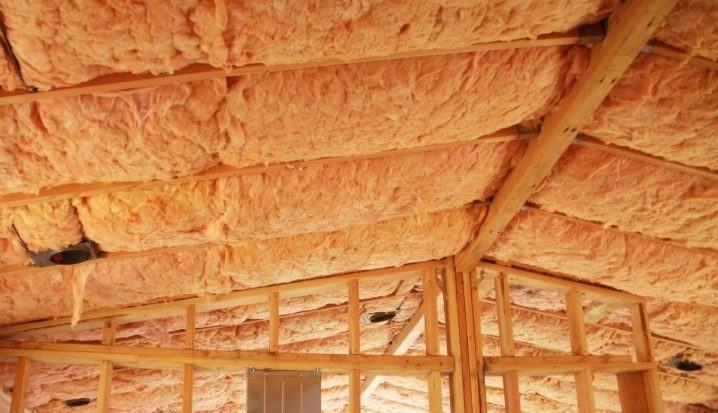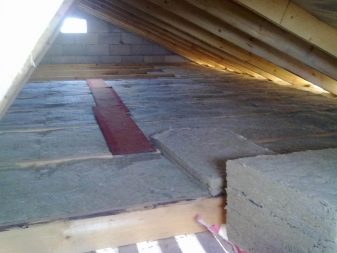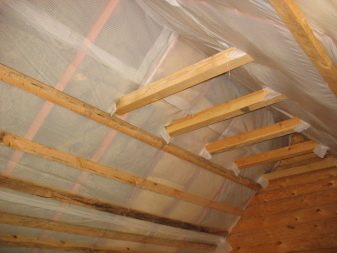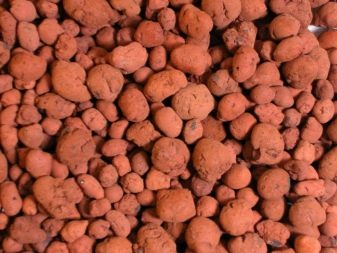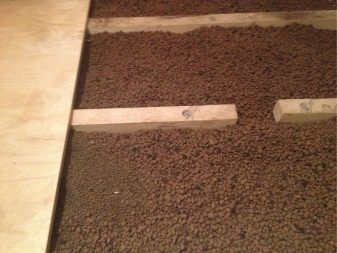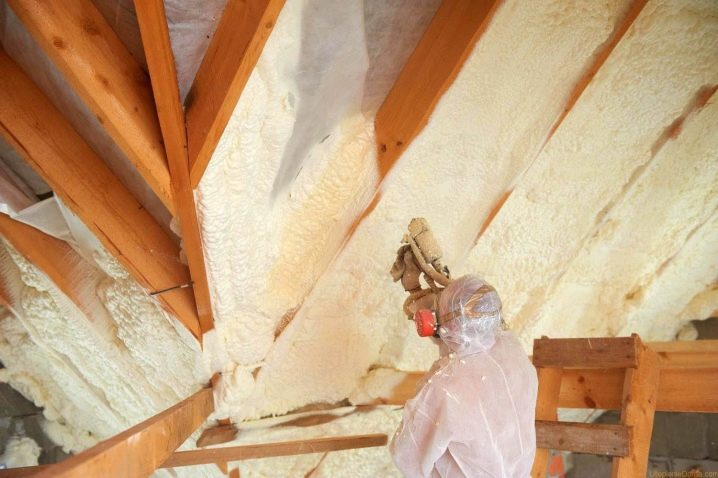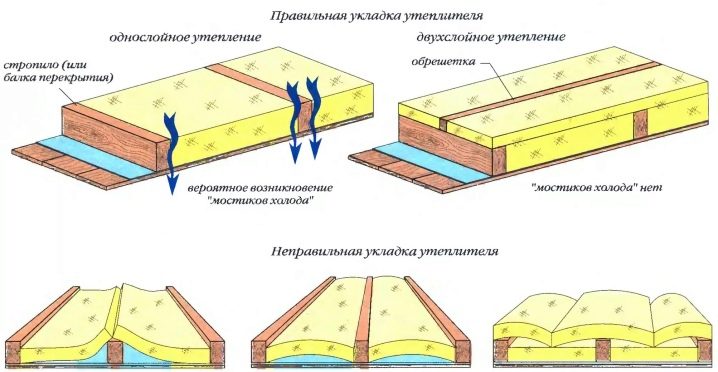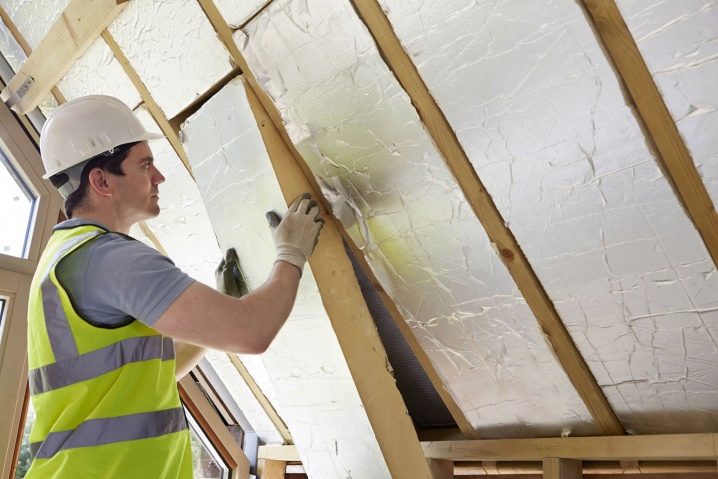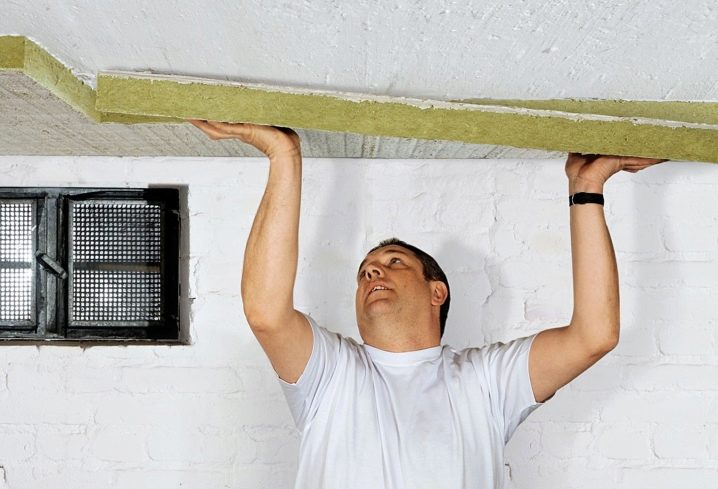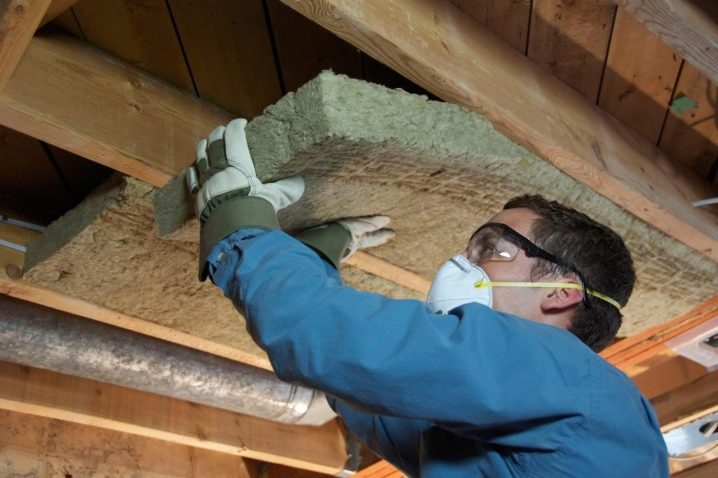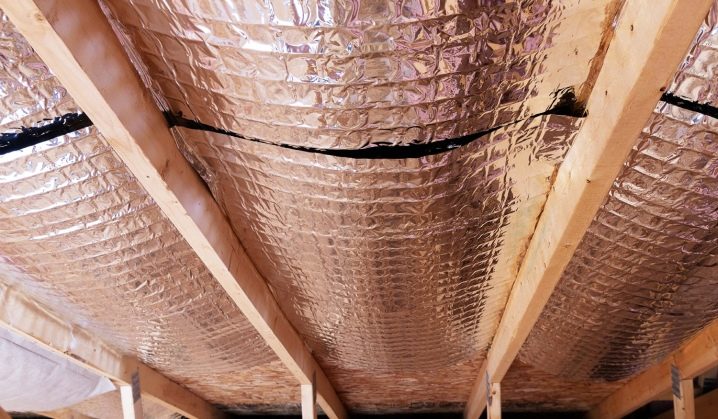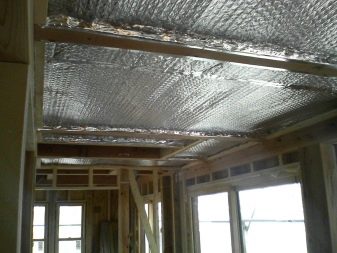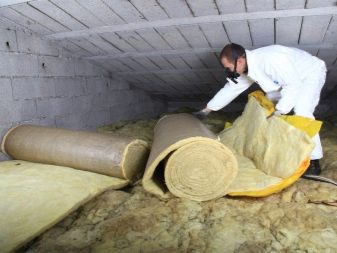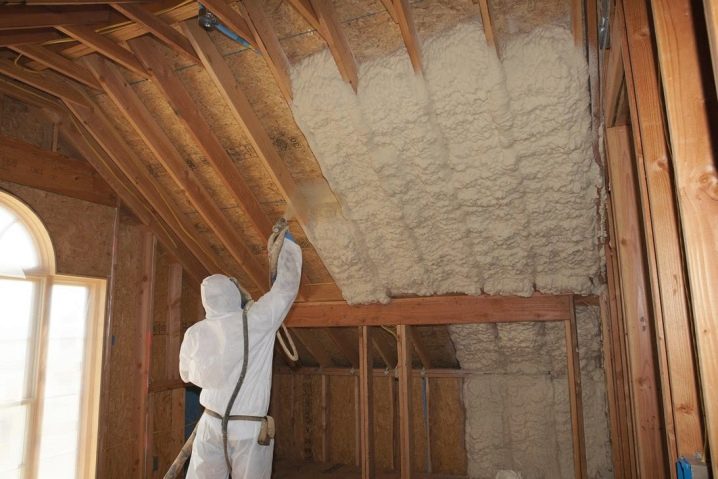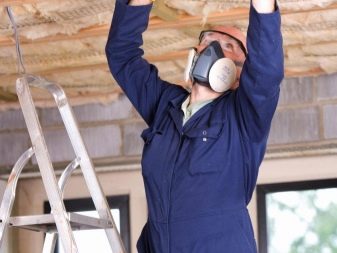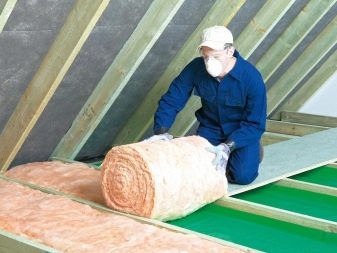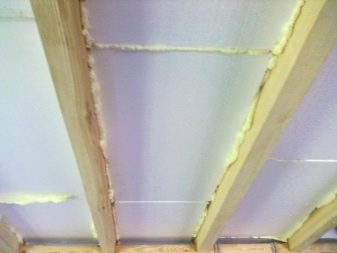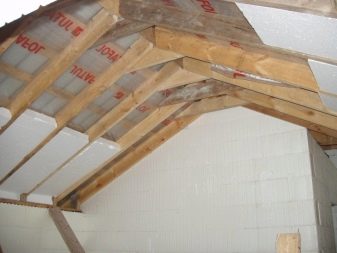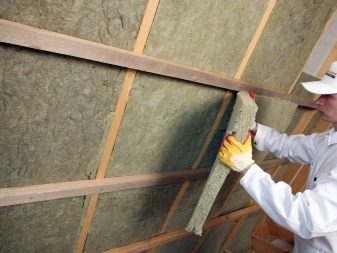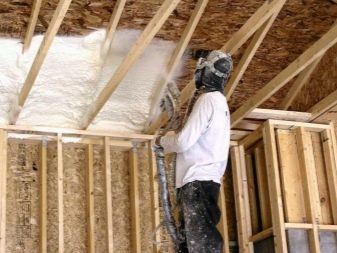The subtleties of insulation of the ceiling in a wooden house
In private wooden houses, as a rule, do beam ceilings. They are strengthened from below with boards for a reliable emphasis. If the attic part of the house is not heated, the ceiling requires compulsory insulation. How to do this, we will discuss in this article.
Special features
From the lessons of physics, everyone knows that there are three ways to transfer heat:
- thermal conductivity;
- convection;
- radiation.
If we are talking about ceiling structures, then all three options are relevant. By convention, heat rises higher, and when heat is transferred from air to materials, the most heated gas is activated. Any designs have cracks and natural pores, so the heated air is partially out with heat. Infrared radiation also contributes to the heating of the ceiling, which goes outside of all heated objects in the room.
All this suggests that through the ceiling there is the greatest loss of heat in the house, so you should start work on the insulation of the building from this part. You can do this by choosing the right insulation material.
Materials
On the modern market presents a huge variety of heaters for the ceiling. Choosing a specific type of material, you need to know its characteristics and installation technology.
Ceilings in wooden houses are often insulated:
- sawdust;
- mineral and ecowool;
- polystyrene foam;
- expanded clay.
Each specified material has its pros and cons. Let us examine them in more detail.
Sawdust
The most environmentally friendly material for insulation - chopped natural wood. With a significant expenditure of material, it is lightweight and does not affect the supporting structures of the house. Sawdust can be purchased at any sawmill for little money, and sometimes completely free. Of the obvious disadvantages of the material is to highlight its increased flammability. In addition, sawdust is an extremely unstable insulation, depending on weather and climatic conditions, it can dry out or, on the contrary, get wet and start to rot.
Mineral wool
The most popular material among buyers as a ceiling insulator in a private home. Its popularity is due to the low price, ease of installation and good heat retention properties. In addition, wool is different soundproof characteristics, does not require periodic replacement, will last a long time. Of the minuses is to provide hygroscopic properties, over time, wool accumulates moisture in itself, which means its insulating characteristics deteriorate. It is important to note that this is not the most environmentally friendly material.
Styrofoam
Modern insulation, presented in the form of plates. Plates are light and safe, they look like polyfoam, but unlike it, they do not have increased brittleness and do not crumble. The performance qualities of polystyrene foam are much higher than the properties of foam plastic; plates made from such material will last longer and will not lose their thermal insulation characteristics. Expanded polystyrene is not afraid of high humidity. The disadvantages of the material are its high cost and flammability. It is important to note that this material should not be laid in a house where rodents are not bred.Mice easily gnaw through the moves in it, because of which deteriorate the insulating properties of the material.
Expanded clay
Sold in the form of porous granules made of clay. The material is quite cheap, while it has good qualities for preserving heat. Indisputable plus of expanded clay - its durability, the material will last many times longer than any other insulation. Neither water nor fire is terrible for claydite. However, it significantly complicates the ceiling structure during installation, it is important to pay attention to this factor if the house is not new.
Important nuances
Wood as a natural material in itself has good thermal insulation properties. Therefore, with a sufficient thickness of the walls of the log house, they themselves perfectly retain heat inside the building. Yet this does not mean that no other insulating material will be needed. Heat is released through the natural pores of the wood material, its significant loss occurs precisely through the ceiling, since heated air is lighter than cold air, which means it rises above it all.
On how correctly chosen and laid insulation on the ceiling, will depend on the comfort of the temperature regime in the rooms of the house.
Any material chosen as a heater must meet certain criteria:
- fire safety;
- environmental friendliness;
- ease;
- low thermal conductivity;
- moisture resistance.
In addition, if the selected material also has soundproofing characteristics, it will provide a more comfortable stay in the house.
The choice of insulation
Choosing an insulating material for ceiling insulation, you need to familiarize yourself with the basic characteristics of each.
Materials can be loose, tiled, rolled, block. According to the characteristics of the composition - organic, inorganic and mixed.
TO organic Insulating materials include sawdust. A mixture of sawdust, peat and hay with the addition of cement can be made durable building composite. Sawdust, perhaps the most ancient insulation used in the construction of houses. However, low refractoriness and wear over time make this material less and less popular. Organic insulation periodically need to be updated, which causes difficulties in capital finishing of the ceiling.
Inorganic insulation - clay, get it out of clay with the addition of impurities by roasting.In addition, this group includes mineral wool. Both materials are in demand in the construction market, while the expanded clay is more popular due to its low cost and high thermal conductivity. The important point is that a very large amount of expanded clay is required for insulating the ceiling, therefore, it is advisable to install it where the ceiling has a beam structure with a solid reel.
Rolled inorganic insulation - mineral wool, no less popular with builders as a heater, put it under the force of even a beginner. The material has the best qualities of heat preservation, it does not deform and does not wear out over time. Ecowool has come to replace mineral wool in the last decade - cellulose with special impregnation with antiseptics and refractory substances.
Polymer insulation inexpensive, durable and light. This is the most modern type of insulation, which has many positive properties. Among the minuses of these materials, it is worth noting the release of acrid smoke during ignition, which has a detrimental effect on human health. But technologies do not stand still, and polymer insulators with high refractory characteristics have recently been developed that do not burn at all and do not emit any substances during smoldering.
What should be the thickness?
The thickness of the ceiling heater to be installed will depend on the insulation material chosen for installation.
The amount of required sawdust can be calculated on the basis of building standards - The thickness of this type of insulation layer must be at least 20 centimeters.
The claydite embankment must have a thickness of 10 centimeters, you can lay more and more, moreover, the thicker the embankment, the better the insulation will be.
Mineral and ecowool are among the most reliable ceilings in a wooden house. For the best effect of thermal insulation, the thickness of this material should be at least 15 centimeters.
And, finally, polymeric insulators are required to have a thickness of 5 centimeters in order to perform their functions of heat preservation.
How to warm?
Warming of ceiling structures can be carried out outside or inside. Which method is more suitable for you will depend on the roof construction, on the repairs already completed in the house, on the height of the attic and the ceiling itself. So, conducting work inside the house, you need to understand that the ceiling height will decrease. If you warm the attic, that is, the ceiling of the house outside, then after installation there will need to lay their own flooring, otherwise the effect will be small.
Ceiling insulation works are best done during the warm season. - in spring and summer, so the cold moisture, which in any case is contained in the material, will evaporate, which will improve the strength and insulation properties of the structure.
By itself, the technology of ceiling insulation should not cause difficulties when using any material, since the main elements - wood floors are already present, you only need to correctly distribute and fix insulation on them.
The first thing that you should definitely pay attention to is that moisture is destructive for wood, so the insulation material must have waterproofing properties.
Before starting the installation work, a visual inspection of the ceiling structures should be carried out for obvious cracks and holes, and if there are any, they should be closed using mounting foam. The foam instantly sets and hardens, after a few hours after applying the excess, it can be cut off with a knife and the entire surface leveled with emery paper.
Another important circumstance is the most common method of insulation with bulk materials: expanded clay leads to a significant weighting of the entire ceiling structure. In addition, it takes a lot of time to evenly distribute the mixture over the surface. More modern counterparts insulation does not need more time and labor costs.
Ceiling insulation works are carried out in three stages.
At first, it is necessary to provide a waterproofing for the ceiling; for these purposes, it is better to choose glassine, which is distributed over the entire surface with strips cut into the same width and length. Waterproofing should be taken so that between the beams there are still 10 centimeters of material. It is necessary to overlap the glassine overlap (about 15 centimeters), and in the joints to make treatment with mastic.
The next step is laying the insulation itself. For example, rolled materials are easily attached to the base with screws.
At the third and last stage, another waterproofing layer is laid out over the insulation. This technology is suitable for working with polymeric materials. If the work was carried out by bulk materials, then on top you will also need to lay additional floor attic, such as plywood.
Mineral wool is laid in two layers. so that the joints of the sheets of the lower and upper layers do not coincide with each other. Sheet size should be 2–3 centimeters greater than the distance between the beams. Vata must be laid very tightly and it is advisable to tamp. In addition, when working with this material, it is important to observe the safety regulations: use a respirator and wear rubberized clothing, eliminating static effects.
In conclusion of all the works, the warmed constructions need to be closed with PVC panels, and the attic itself can be sheathed, for example, with clapboard.
Tips and tricks
For insulation of the ceiling, there is a special ceiling tile made of foam, it protects well from the cold, but in harsh winters alone it will not be enough, but you can still save on the main insulation and facilitate the entire structure.
Warming the ceiling alone will not lead to the proper effect, the warm air will escape through any cracks found, so the walls with the floor also require thermal insulation.
If you have doubts about your own strengths and skills, it is better to turn to professional workers.Improperly insulated ceiling will not bring any benefit, and the masters will do everything qualitatively and quickly, based on their own experience and the requirements of building codes.
Plasterboard constructions need fasteners with galvanized iron profiles, since the material itself cannot hold weight and without reliable support it is likely that it will fall.
It is well possible to warm the ceiling with mineral wool or penoplex. For timber, these are reliable “companions” that can be used between floors. In a country house, warming from the inside is very important, and it can be done with your own hands.
During the construction phase, the ceiling should be insulated immediately, but if a ready-made house is purchased and there is no insulation, it is necessary to carry out work immediately after settling, having thought through the procedure and scheme of work in advance.
On the intricacies of insulation of the ceiling in a wooden house, see the following video.


